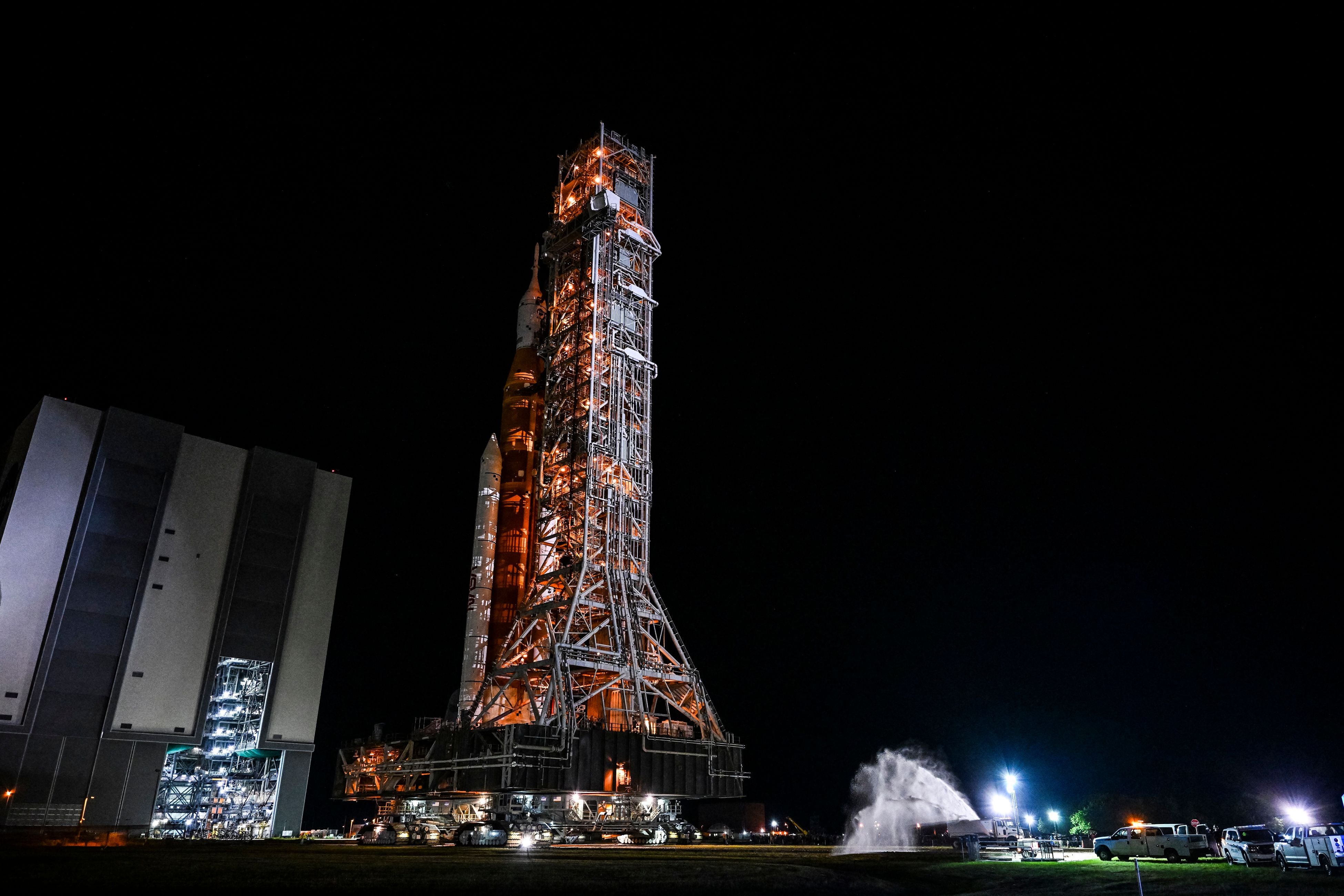Nasa’s new Artemis Moon rocket rolls to its launchpad

Your support helps us to tell the story
From reproductive rights to climate change to Big Tech, The Independent is on the ground when the story is developing. Whether it's investigating the financials of Elon Musk's pro-Trump PAC or producing our latest documentary, 'The A Word', which shines a light on the American women fighting for reproductive rights, we know how important it is to parse out the facts from the messaging.
At such a critical moment in US history, we need reporters on the ground. Your donation allows us to keep sending journalists to speak to both sides of the story.
The Independent is trusted by Americans across the entire political spectrum. And unlike many other quality news outlets, we choose not to lock Americans out of our reporting and analysis with paywalls. We believe quality journalism should be available to everyone, paid for by those who can afford it.
Your support makes all the difference.Nasa’s vast Space Launch System – the rocket that could one day take humans back to the Moon – is on its way to launch.
The space agency is rolling out the huge rocket, along with an uncrewed astronaut capsule that will be tested in the launch, in an hours-long process that will see it arrive on its launchpad.
The journey began on Tuesday night – ahead of a scheduled launch later this month.
The 322-foot-tall (98-meter) rocket is scheduled to embark on its first mission to space - without any humans - on 29 August. It will be a crucial, long-delayed demonstration trip to the moon for NASA’s Artemis program, the United States’ multibillion-dollar effort to return humans to the lunar surface as practice for future missions to Mars.
The Space Launch System, whose development during the past decade has been led by Boeing, emerged from its assembly building at NASA’s Kennedy Space Center in Florida about 10 p.m. EDT (0200 GMT) on Tuesday and began a four-mile (6-kilometer) trek to its launchpad.
Moving less than 1mph (1.6kph), the rollout will take roughly 11 hours.
Sitting atop the rocket is NASA’s Orion astronaut capsule, built by Lockheed Martin Corp. It is designed to separate from the rocket in space, ferry humans toward the moon and rendezvous with a separate spacecraft that will take astronauts to the lunar surface.
For the 29 August mission, called Artemis 1, the Orion capsule will launch atop the Space Launch System without any humans and orbit the moon before returning to Earth for an ocean splashdown 42 days later.
If bad launch weather or a minor technical issue triggers a delay on 29 August, the National Aeronautics and Space Administration has backup launch dates on 2 September and 5 September.
Additional reporting by Reuters
Join our commenting forum
Join thought-provoking conversations, follow other Independent readers and see their replies
Comments